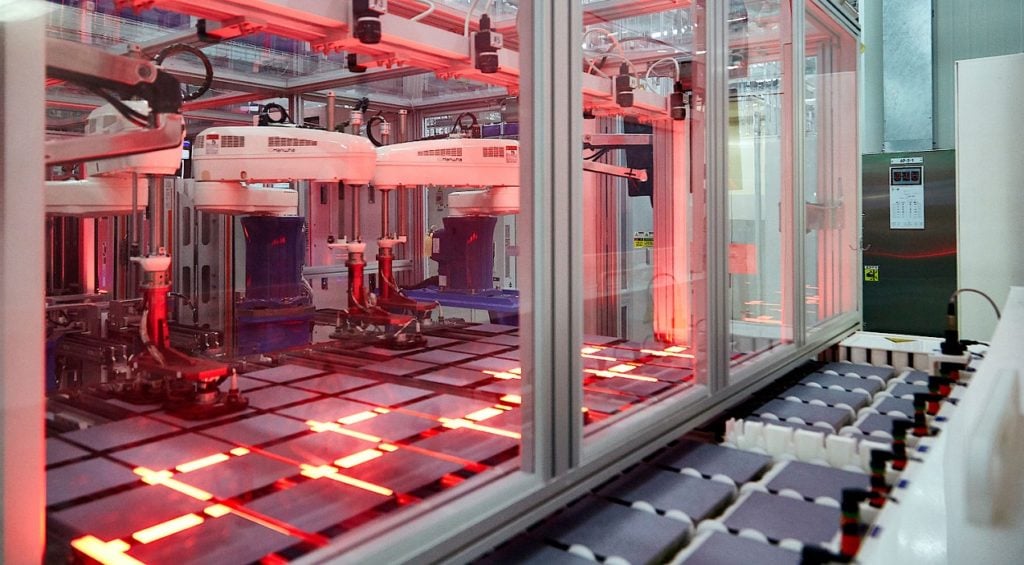
Europe will benefit from a new research and innovation (R&I) project intended to advance the continent’s tandem solar PV cell manufacturing and production capabilities, focusing on tandem silicon-perovskite cells.
Entitled PEPPERONI, the project will run for four years and is co-funded by the EU under Horizon Europe – its long-term funding programme for R&I – and the Swiss Secretariat for Education, Research and Innovation. Coordinated by climate research institute Helmholtz-Zentrum Berlin (HZB) and solar manufacturer Qcells, the PEPPERONI project began on 1 November.
Qcells said that a pilot line for tandem production will be established at its European headquarters in Thalheim, Germany, aiming ultimately at industrial production of perovskite-silicon tandem cells. Over the four-year lifespan of the project, funding will total around €14.5 million (US$15 million).
The company also said that PEPPERONI is intended to accelerate Europe’s 2050 net zero targets. The proposed increase in power conversion efficiency offered by tandem cells exceeds the practical possibilities of silicon-only cells, allowing for a long-term lower levelised cost of energy and short-term deployability in areas where space is limited, such as on rooftops.
Fabian Fertig, director global R&D wafer and cells at Qcells, said: “Qcells is proud to be part of the PEPPERONI consortium with its world-class technology partners.
“This research promises to break new ground in the advancement of perovskite-silicon tandem solar cell and module technology. At a time of unprecedented pressures on the current energy system, it is exciting to realise this first and transformative step towards industrial-scale manufacturing of next-generation PV technology in Europe.”
The partners in PEPPERONI cite the well-established industry expertise and falling costs of silicon PV production as the basis for its goals to expand production of tandem cells. It aims to scale up the useful area of perovskite-silicon tandem cells to industry-relevant size from the 1cm2 squared of current record devices.
Last month, Dutch researchers revealed a perovskite-silicon cell with 30% efficiency.
The PEPPERONI consortium said that imposing a perovskite top cell on a silicon bottom cell – made using Qcell’s gigawatt-scale Q.ANTUM silicon production technology – with “only a few extra process steps” will allow for a cost-effective production expansion.
Bernd Stannowski, head of group industry compatible processes, solar cells and modules at HZB added: “At HZB we have developed the tandem technology to world-record efficiency level on lab scale. We are now looking forward to cooperate in the PEPPERONI consortium with partners from science and industry to jointly scale this new and very promising technology up and transfer it to industry.”
Perovskite tandem cells are yet to be produced at scale. Recently a partnership between Voltec Solar and the French research facility IPVF proposed a perovskite/silicon ‘gigafactory’ with 5GW of scale by 2030. They did not confirm the method by which this scale would be reached.





